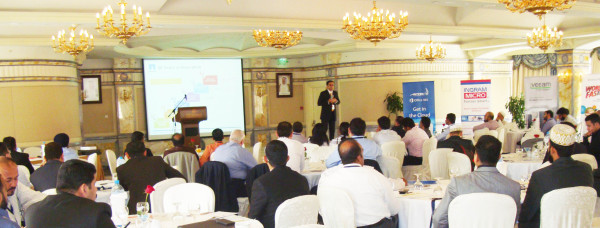- Voices Across India: Breaking Reports & In-depth hindi news Analysis for a Global Audience.
- The Rise of Digital Hindi News Platforms
- Challenges of Maintaining Journalistic Integrity
- The Role of Fact-Checking and Media Literacy
- The Impact of Social Media on Hindi News Consumption
- The Future of Hindi News: Innovations and Trends
Voices Across India: Breaking Reports & In-depth hindi news Analysis for a Global Audience.
In today’s interconnected world, access to information is paramount, and the demand for news in diverse languages is ever-increasing. Among these, hindi news holds significant importance, serving a vast population across India and the diaspora. The proliferation of digital media has dramatically altered how individuals consume information, shifting away from traditional outlets towards online platforms and social media. This evolution presents both opportunities and challenges, requiring a careful examination of credibility, accuracy, and the evolving landscape of journalism. Understanding the nuances of reporting within a specific linguistic and cultural context, like Hindi, is crucial for delivering impactful and responsible journalism.
The Rise of Digital Hindi News Platforms
The shift to digital platforms has revolutionized the way hindi news is disseminated and consumed. Traditional newspapers and television channels are increasingly complemented by online news portals, mobile applications, and social media channels. This proliferation offers greater accessibility and convenience for audiences. However, it also introduces concerns about the spread of misinformation and the decline of traditional journalistic standards. Many digital platforms employ data-driven personalization, creating echo chambers where users are primarily exposed to information confirming their existing beliefs.
This accessibility is further enhanced by the decreasing cost of data and the increased smartphone penetration in India. This has particularly benefited rural populations who may not have had consistent access to traditional media. Online platforms are adapting by offering content in various formats, including short-form videos, infographics, and live streams, catering to diverse preferences and attention spans. This shift necessitates a renewed focus on media literacy and fact-checking to ensure audiences can discern credible sources from misleading information.
The landscape of digital news also includes a growing number of independent online news agencies and citizen journalism initiatives. These platforms often offer alternative perspectives and coverage of issues overlooked by mainstream media. However, they may lack the resources and editorial oversight of established news organizations, requiring a cautious approach to evaluating their content. Below is a table illustrating the growth of digital news consumers in India:
| 2018 | 210 | – |
| 2019 | 280 | 33.3% |
| 2020 | 370 | 32.1% |
| 2021 | 440 | 18.9% |
| 2022 | 520 | 18.2% |
Challenges of Maintaining Journalistic Integrity
Maintaining journalistic integrity in a rapidly evolving media landscape is a significant challenge, particularly in the context of hindi news. The pressure to attract clicks and secure advertising revenue can incentivize sensationalism and biased reporting. Furthermore, the anonymity afforded by the internet can contribute to the spread of fake news and malicious disinformation campaigns. This can have serious consequences, inciting social unrest, manipulating public opinion, and undermining trust in institutions.
The influence of political and corporate interests poses another threat to journalistic independence. Media outlets may be subject to pressure from government officials or business owners to slant coverage in their favor. This can manifest in subtle forms, such as prioritizing certain stories or framing issues in a particular light, or in more overt forms, such as direct censorship or interference. Transparency in media ownership and funding is crucial to identifying and mitigating these conflicts of interest.
Here’s a list of common challenges facing Hindi news organizations today:
- Combating misinformation and fake news.
- Maintaining editorial independence.
- Ensuring financial sustainability.
- Attracting and retaining skilled journalists.
- Adapting to changing audience preferences.
The Role of Fact-Checking and Media Literacy
In response to the proliferation of misinformation, fact-checking organizations have emerged as critical gatekeepers of information. These organizations employ teams of journalists and researchers to verify the accuracy of claims made in news reports, social media posts, and political statements. However, fact-checking is often reactive, addressing misinformation after it has already spread. Therefore, proactive measures to promote media literacy are essential.
Media literacy education empowers individuals to critically evaluate information sources, identify bias, and distinguish between credible and unreliable content. This includes teaching citizens how to verify information independently, how to recognize manipulative techniques, and how to understand the underlying political and economic forces shaping the media landscape. Integrating media literacy into school curricula and public awareness campaigns is vital for fostering a more informed and discerning citizenry.
The Impact of Social Media on Hindi News Consumption
Social media platforms have become primary sources of hindi news for a large segment of the population, particularly younger demographics. Platforms like Facebook, Twitter, and WhatsApp offer instant access to breaking news and diverse perspectives. However, they also present unique challenges related to the control and dissemination of information. The algorithmic nature of social media can create filter bubbles, exposing users only to content that aligns with their existing beliefs, reinforcing biases, and hindering critical thinking.
The speed and virality of social media can also contribute to the rapid spread of misinformation. False or misleading stories can quickly gain traction and reach a wide audience before they can be debunked. This is particularly problematic in contexts where media literacy is low and trust in traditional institutions is declining. Social media companies are under growing pressure to address these issues through content moderation, fact-checking partnerships, and algorithmic adjustments.
Consider these key social media platforms used for news consumption in India:
- Facebook: Remains the most popular platform for news sharing.
- YouTube: A significant source of video news and analysis.
- Twitter: Used for breaking news and real-time updates.
- WhatsApp: A popular platform for sharing news and information within personal networks.
- Instagram: Increasingly used for visual news and storytelling.
The Future of Hindi News: Innovations and Trends
The future of hindi news will likely be shaped by several key innovations and trends. Artificial intelligence (AI) is poised to play a growing role in news gathering, content creation, and distribution. AI-powered tools can automate tasks such as transcription, translation, and fact-checking, freeing up journalists to focus on more complex and nuanced reporting. However, it is crucial to address ethical concerns related to algorithmic bias and the potential displacement of human journalists.
Another emerging trend is the rise of hyperlocal news platforms, catering to the specific information needs of local communities. These platforms can provide coverage of issues overlooked by mainstream media, fostering greater civic engagement and accountability. However, hyperlocal news organizations may face challenges related to financial sustainability and attracting a critical mass of readers. The development of innovative business models, such as community support and micro-payments, will be crucial for their success.
Here’s a glimpse into potential revenue models for digital Hindi news:
| Advertising | Display ads, sponsored content, native advertising. | Moderate – Highly competitive |
| Subscriptions | Paywalls, membership programs, exclusive content. | Growing – Requires high-quality content |
| Donations | Crowdfunding, individual contributions. | Limited – Reliant on public support |
| Events | Webinars, conferences, workshops. | Moderate – Requires strong community engagement |
| Data Analytics | Providing insights based on audience data. | Emerging – Raises privacy concerns |
In conclusion, the landscape of hindi news is undergoing a period of dramatic transformation. While the digital revolution has created unprecedented opportunities for access and engagement, it has also presented significant challenges to journalistic integrity and sustainability. Addressing these challenges requires a collective effort from media organizations, technology companies, policymakers, and citizens to promote media literacy, support independent journalism, and foster a more informed and democratic society.






